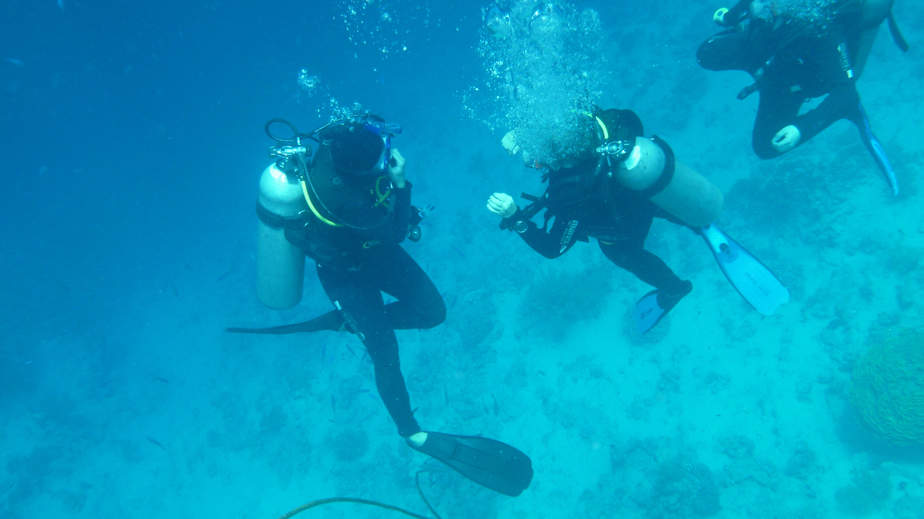When an emergency happens underwater, it’s very easy to panic or freeze because you aren’t sure what to do. You look around, hoping that there’s a more experienced diver who’ll take charge of the situation and save the day. Maybe there’s no one else around or maybe you are the most experienced diver in the group and everyone’s looking at you. Instead of hoping that you never have to deal with an emergency like this, why not equip yourself with the skills to face it head on? It could mean the difference between life or death for someone in the future.
By taking a Rescue Diver course, you will learn the skills needed to deal with emergency situations underwater, such as an injury, equipment malfunction, medical event, or diver error. Divers who have finished the Rescue Diver course say that it’s one of the most demanding yet rewarding dive courses that they have ever taken at that point in their scuba career.
This course will challenge you and help you to become a better diver. Depending on how often you dive, you may never need to use the skills you learn in this course, but it’s better to be over-prepared than not. In this article, we’ll discuss how to become a rescue diver and why it’s worth it.
Why take the Rescue Diver course?
The Rescue Diver course is designed for divers who want to know how to prevent or handle dive emergencies for most types of diving. The course aims to improve diver’s situational awareness, their diving skills, and their confidence. The best way to deal with an emergency is to see it coming from a mile away and completely avoid it in the first place. If an unexpected emergency were to occur, the group will have a better chance of getting out of it with no loss of life.
You might be thinking “I’m only a recreational diver” or “I don’t plan on becoming a professional diver”. However, you can still benefit from taking this course. It will make you a more well-rounded and knowledgeable diver. Also, wouldn’t you feel much safer diving knowing that your dive buddy is a certified Rescue Diver? Imagine if you gave that reassurance to others. Imagine if more divers were rescue divers. I’m sure the fatality rates for scuba diving would almost reach zero.
Goals of the course
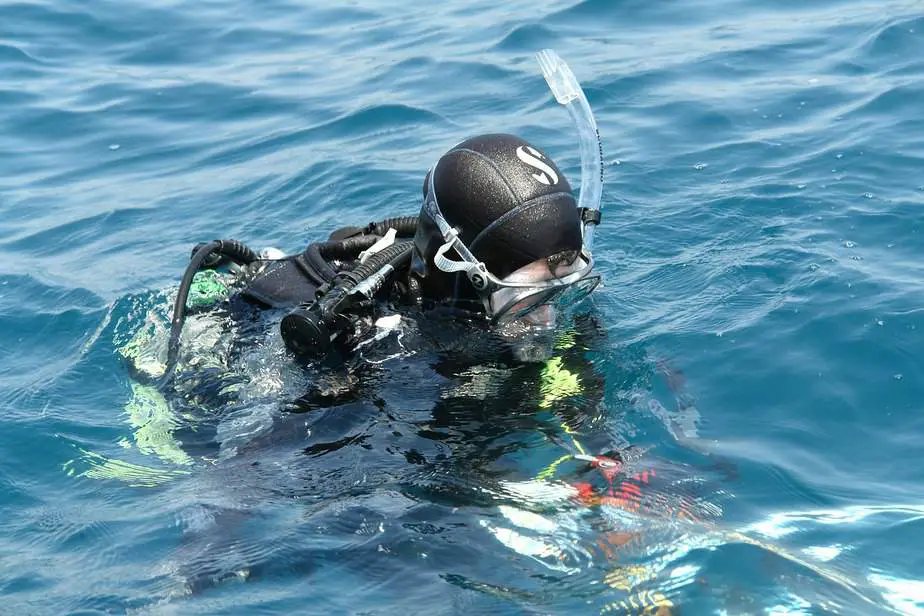
The Rescue Diver course will give you the knowledge to handle all kinds of dive emergencies, from minor to major, using various techniques. By increasing your knowledge and practicing rescue exercises, you will be an expert at emergency prevention and know how to respond in the event of an emergency.
Some topics the course will cover are:
- The psychology of rescue.
- Recognizing diver stress.
- Accident management.
- Assisting responsive and unresponsive divers at the surface and underwater.
- Equipment malfunctions.
- Oxygen delivery systems.
- Missing diver procedures.
- Responding to diver emergencies and inwater rescue breathing.
If those topics sound interesting to you, then you should consider taking the Rescue Diver course.
With that said, not everyone can take the Rescue Diver course. You need to meet the minimum requirements, which are:
- Be 15 years of age or older.
- Have Advanced Open Water Diver certification.
- Have valid CPR and First Aid certification (within the last 24 months).
A hidden benefit of taking the Rescue Diver course
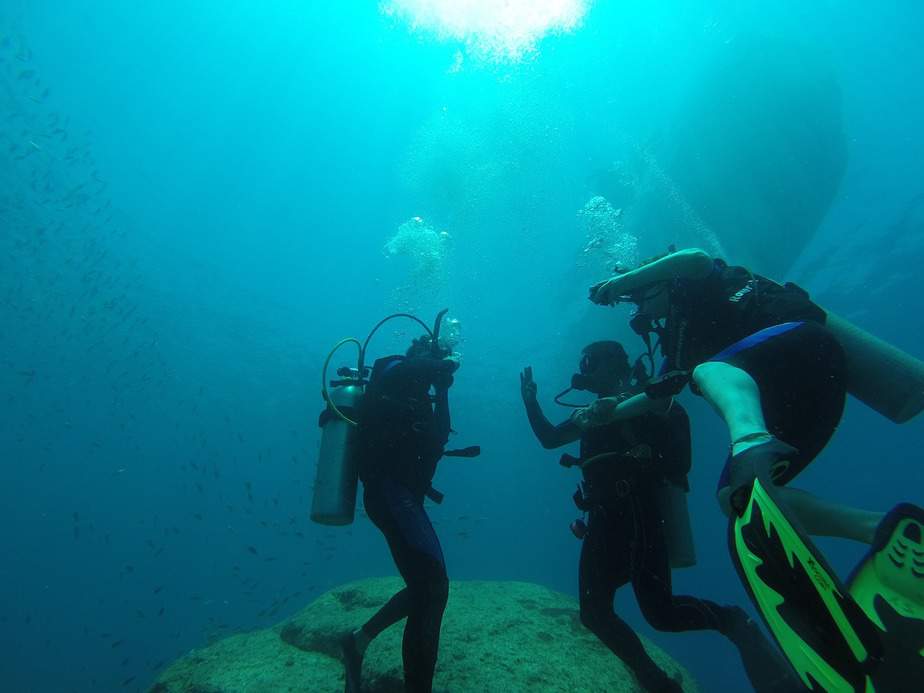
I mentioned that taking the Rescue Diver course will make you a more confident diver and I cannot overstate that. Prior to taking the course, like some divers, I was not a confident diver. The introductory paragraph of this article was me tapping into my past fears and projecting it, but I’m sure some other divers feel the same. I always felt a little nervous when diving and I prayed that my dive buddy and I would never encounter an emergency because I wasn’t sure I’d know how to handle it.
After taking the Rescue Diver course, I still had a healthy fear of truly dangerous situations, but I’ve also felt more at ease since then. Taking the course gave me the confidence and the skills to be the best diver that I can be. I still get butterflies in my stomach whenever I dive, but it’s from sheer excitement and not nervousness. When you have the skills to handle emergencies, you can enjoy your dives freely with a quiet confidence that you are ready for anything. Perhaps after taking the Rescue Diver course, you may even decide to pursue a career in diving.
What to expect from the Rescue Diver course
The Rescue Diver course takes 2-3 days to complete. The first day will be in a classroom where you will study the knowledge component of the course. This builds on what you have learned in the Advanced Open Water Diver course with an emphasis on staying safe and helping people. On the second day, you’ll spend the morning in a pool practicing the techniques taught in class. In the afternoon, you’ll perform two open water dives for hands-on experience in a realistic setting. The third and final day are when you complete your final two open water dives. The schedule may be slightly different from dive shop to dive shop, however it should roughly follow this basic format.
Knowledge component
The first day of the Rescue Diver course will take place entirely in a classroom where you will learn the knowledge component of the course. With E-Learning, you will skip this day. In our opinion, if possible, you should take the classroom version of the course. In person, it’s a lot easier to see which points the instructors are placing more emphasis on. Plus, you can ask for clarification or ask specific questions.
This day is also when you will do your emergency first response (EFR) training if you haven’t done so already. You will be introduced to the basics of Primary Care (CPR), Secondary Care (First Aid), Care for Children, as well as how to operate an AED (defibrillator).
You’ll also complete your Emergency Oxygen Provider training if you decide to add that onto your Rescue Diver training. I think it’s a good idea to add this on; honestly, I’m not sure why it isn’t part of the main course itself because it’s so useful to know as a diver. As it stands, it’s an optional specialty course that teaches you how to recognize and treat illnesses with emergency oxygen, and how to administer the oxygen to the injured diver.
Confined water component
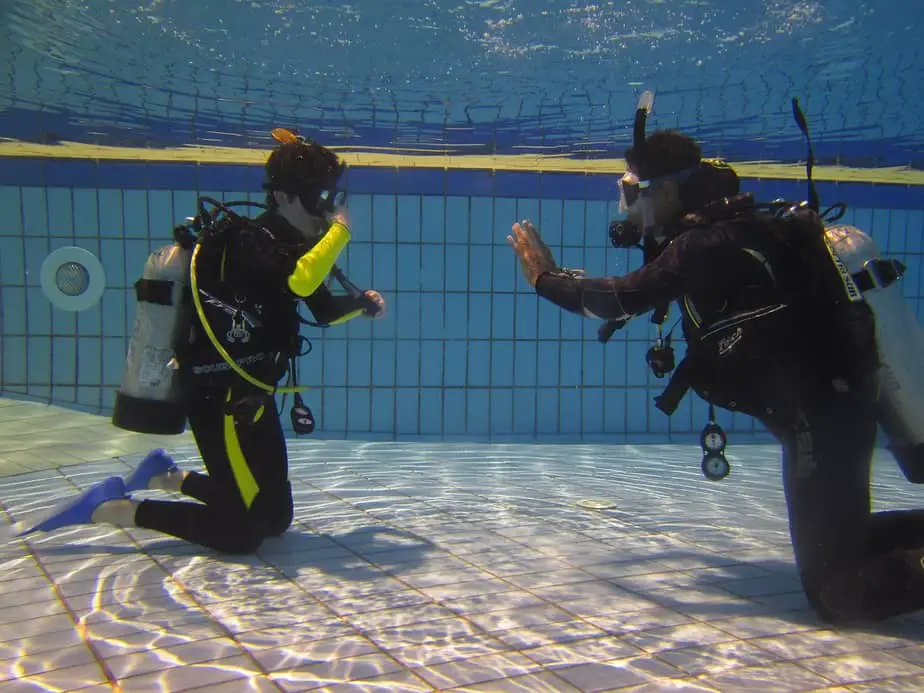
On the second day (the first day if you went the E-Learning route) of the Rescue Diver course, you can apply what you learned in the knowledge component in a more realistic setting. The day will start off in a pool and end in open water.
You are expected to demonstrate skills such as basic self-rescue techniques (i.e. cramp release, switching air supplies). Then you’ll move on to rescue skills like assisting a tired diver, a panicked diver, an unresponsive diver at the surface, and one at depth.
Students will also learn how to identify these situations and how to handle them with such skills as tired diver tows and inwater rescue breaths. They’ll learn how to approach the situation safely without jeopardizing their own safety. One of the first lessons students will learn is to prioritize their own safety because they won’t be able to save anyone if they also get injured; they will be in need of rescuing instead.
The skills learned in the hands-on component are straightforward. Where students struggle is the step-by-step procedure because there is a process to it that can be difficult to remember in the middle of a high-pressure situation. The primary thing to remember is to stay calm by stopping for a moment to breathe and think. As you get more experience, these skills will be seared into your muscle memory forever.
Open water component
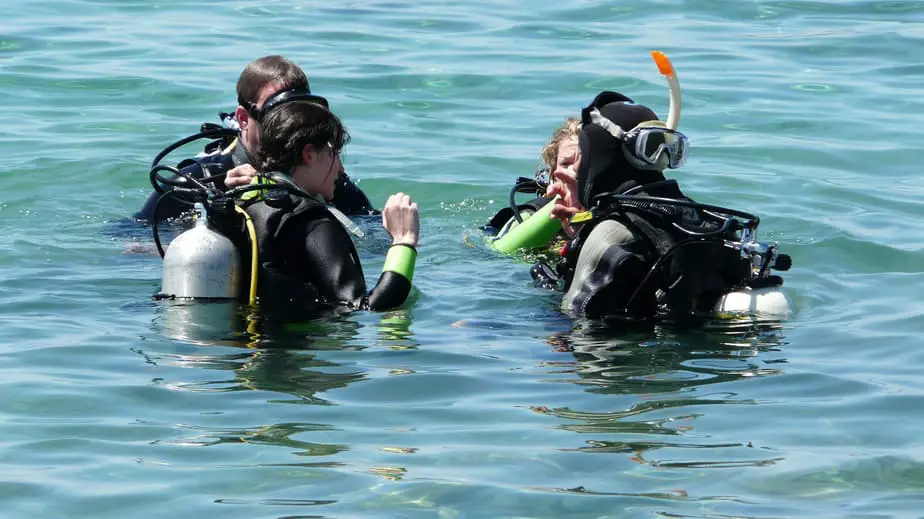
The third day (second day for E-Learners) is all about open water diving. A minimum of 4 open water dives is required to complete the Rescue Diver course. The dives may be split two on one day, two on another. The first two dives will be a repeat of all the skills you practiced in the confined water component, so it’s just repetition to engrain the knowledge and movement patterns into your brain.
Essentially, the confined water component is the warm-up so that the first two open water dives will be smoother. Instructors won’t need to waste any time explaining anything on the boat because you should already know what’s expected of you.
The final two open water dives are where things get tricky. You will roleplay a rescue scenario. Personally, I dislike role-playing because a part of me finds it silly and I always feel awkward saying or doing things I don’t mean. However, it’s a critical part of the Rescue Diver course and if your instructors are any good, they’ll make it challenging but fun (at least bearable).
The scenarios are designed so that you will utilize all of the skills and knowledge you learned in the prior classes and apply them. It’s a chance for the instructors to see how much you’ve learned and whether you are worthy of being a certified Rescue Diver. This is the real exam, and as much as I cringed at role-playing, I understand how critical this portion of the course is. Remember to stop, think, and breathe, and you’ll get through it just fine.
Cost of taking the Rescue Diver course
The cost of the Rescue Diver course, as well as any additional fees, varies depending on which dive center you go to. The cost of the base course, which includes any textbooks and the open water dives, is around $300 – $400. You’ll also need to take the EFR course which is another $99 unless you already have a CPR equivalent from a recognized organization. You’ll also need to purchase a pocket mask which is required to complete many of the skills taught in the course.
All in all, the mandatory costs are around $500. You can also choose to add the Emergency Oxygen Provider specialty course which is another $99. I think this is a great thing to learn and it makes you an even better rescue diver. So the course can be anywhere from $500 to $600 dollars depending on how many specialty courses you add.
If you decide to do your knowledge component online via E-Learning, then you can add another $146 to the price tag. If you go this route, you get to “skip” the first day and start from the confined water component of the course. In my experience, the E-Learning price is added on top of the other costs, not included as part of it, so in that case I don’t think it’s worth it. You’ll have to contact the specific dive shop to see how they handle the costs.
What can you do with a Rescue Diver certification?
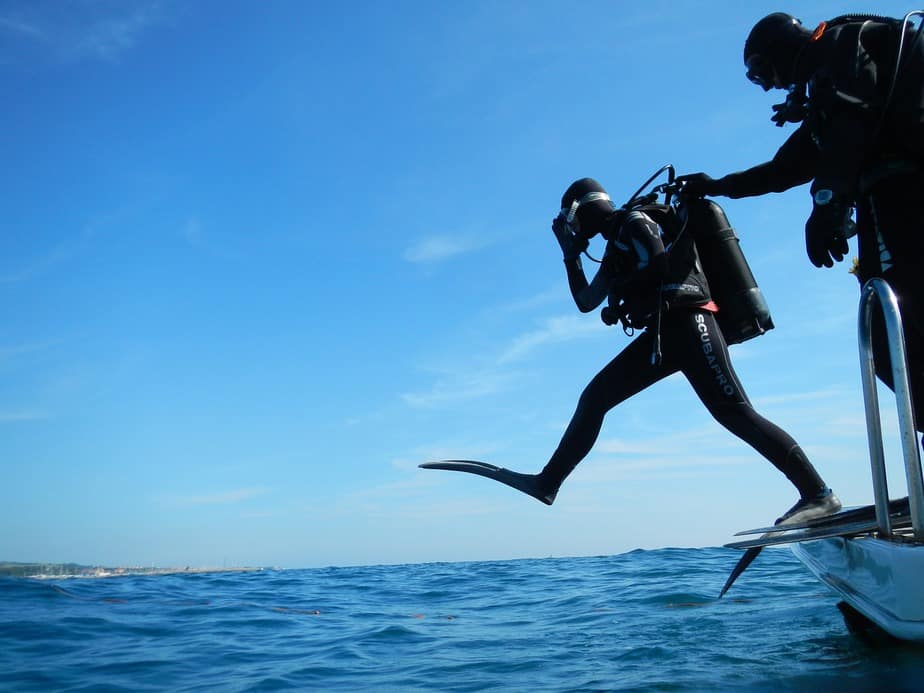
So now you’re certified. What happens next? If you took the Rescue Diver course to improve your skills and confidence as a diver, then go forth and enjoy diving to the fullest. You can maybe brag about it or reassure your dive buddy that you’re a rescue diver.
A Rescue Diver certification is one of the requirements for you to become a Divemaster or Master Diver, so if you want to keep getting those certifications, that’s the next logical step. The skills taught in the Rescue Diver course is essential if you want to have a diving career.
If you’re feeling altruistic, you can become a volunteer rescue diver. Even if you don’t end up becoming a diving professional, you never know when you might save somebody’s life because of what you learned from this course. Becoming a certified rescue diver will equip you with the skills and knowledge to tackle any diving “what ifs” that may occur in the water.
Going through the Rescue Diver course was a tough but rewarding experience. The peace of mind that I now have whenever I go diving makes my experience so much more enjoyable. Having the skills and knowledge to save someone gave me much more confidence in the water because I know I can not only take care of myself, but anyone else who might be struggling. You, too, can feel this way after getting Rescue Diver certified and you won’t regret it for a second.

